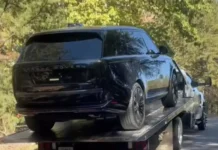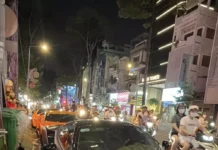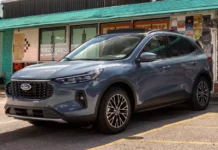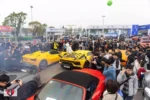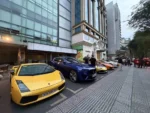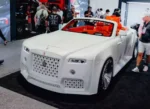Each province in Cuba has a vintage car club. This is where the oldest and most original cars gather, as they were when they left the factory. Currently, these clubs are preserving a large number of vintage cars that no other country in the world has, such as the 1905 Cadillac known as the “national treasure”.
Currently, almost all cars in Cuba are produced by the US from the 1930s, 1940s and 1950s; Soviet cars (used) account for about 30%, and the rest are a few modern cars.
Vintage cars need permission to be repaired
These clubs are managed by the Havana City Historical Office. This office has the authority to permit or not permit the repair or replacement of vintage cars. And there is no trading at all.
The vintage car club currently manages 431 cars (2008 figures). On Sunday morning, the club organizes vintage car parades in Havana. Those who join the club must adhere to a principle that if they want to repair or replace any parts, they must request and be approved.
Since vintage cars are difficult to repair or replace parts for, because there is no longer any place that produces such cars, replacing a part for a car is a long and laborious process.
One interesting thing in Cuba is that anyone who owns a car becomes a mechanic. For the people of Cuba, a car is a big asset, and they invest a lot of money and effort in their cars.
Many cars in Cuba may look vintage from the outside, but the engines inside are modern cars like Hyundai, Mitsubishi, and Toyota… And everyone tries to install diesel engines because they are more economical and easier to buy on the black market.
However, a car produced in the US in the 1950s never costs less than $5,000; Russian cars are a bit more expensive, from $7,000 onwards. And almost every Cuban family has a car.
After work, they become taxi drivers
Cars in Cuba are not only a means of transportation but also the main source of income for many families. Many people rent out their cars for interprovincial trips for $40-60 per day, so in a month, they can earn nearly $2,000, a not insignificant amount for the majority of Cubans. In addition, many people also work as taxi drivers in the evening.
Due to limited economic conditions, many people with high education levels, working at universities, or large hospitals still work as taxi drivers in the evening. This job provides them with a significant income, even several times higher than their state salary.
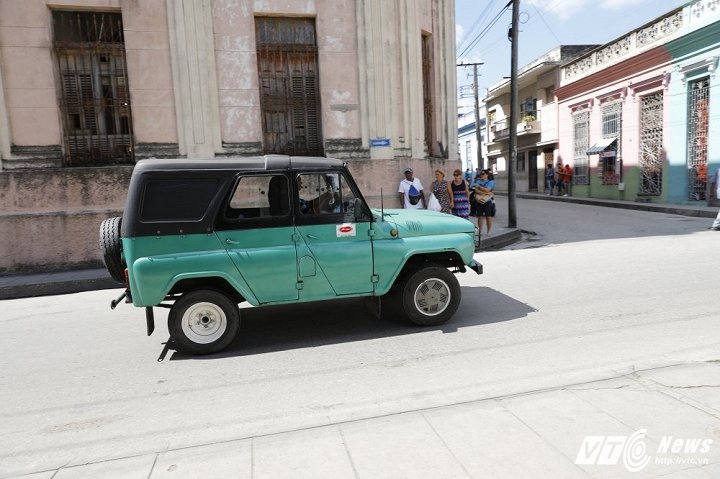
Soviet U-boat cars are very popular in government agencies in Cuba. Photo: Phong Son
Anyone who has studied in Cuba will never forget the scene of riding in a bus. Some criticize it, but some see it as an interesting experience in life.
In Cuba, there are two main types of public transportation, buses and coaches. Coaches are mainly privately owned, and in recent years, the government has begun to take measures to manage these cars, avoiding price pressure and ensuring passenger safety.

Lam car – preferred means of public transport in suburban provinces. Photo: Phong Son
Interprovincial buses in Cuba are mostly sold cheaply by China, mostly used and repaired. To buy a bus ticket, you have to register about 2 weeks in advance, sometimes you have a name but can’t buy a ticket on the day of travel.
Therefore, many people choose to buy black market tickets or travel by coach, which costs a bit more but is guaranteed. Of course, everyone tries to take the bus because it’s more comfortable.
In the city, there are many types of buses. Cuban people use buses a lot, there may be crowded scenes on the bus, but there is no pushing or shoving at the bus stop. In large cities, there are double-decker buses, these are custom-made, and can carry several hundred people. It is called a double-decker bus because in the middle of the bus, there is a rubber pipe that sticks up like a double-decker camel.
Private coaches have the advantage of being fast, and the drivers are ready to take passengers to their doorstep. However, it is not comfortable, firstly because not all coaches have air conditioning, an old car should only seat 4 people, but the driver always squeezes in 6 people. If the passengers are all thin people, it’s still comfortable, but if there are big people, it’s a real struggle.
A common feature of Cuba and Latin American countries is that the drivers always roll down the windows and turn the music up loud. Many foreign students were not used to it at first, but after a while, they liked it, and when there was no music, they missed it. Inside many cars, it is “modified” like a dance floor with all kinds of lights and screens…
In Cuba, traffic jams never happen, there is no speeding, reckless overtaking, swerving, and many other tricks like in Vietnam. This is because of the awareness of Cuban people when participating in traffic.
Cubans adhere to traffic regulations strictly, traffic police in Cuba mainly inspect suspicious vehicles, rather than honking to stop cars for speeding. And there is no bribery with the police, if you commit an offense, you will receive a ticket and have to go to the nearest police station to pay the fine. For more serious offenses, they will mark your driver’s license.
Traffic police in Cuba are very strict, and the Traffic Police Department of the Cuban Ministry of Internal Affairs has a good management policy to combat corruption. That is, when a police officer gives an order to stop a car, the first thing to do is to call the center and announce that “I… have stopped the car with license plate… the driver’s name is…”.
At the center, the officer on duty will inform the police officer immediately about the information of the car and the driver. Then, the police officer must immediately state the reason for giving the order to stop the car and what punishment has been given.
It is also worth mentioning Cuba’s urban planning, all cities in Cuba are built in a chessboard pattern, spacious and convenient for transportation, avoiding congestion. In the middle of the capital city La Habana, there is a large road that runs the entire length of the city and when traveling on this road, cars must travel at 60 to 100km/h.
Hitchhiking culture is rare
The people of Cuba have a very good habit of hitchhiking. You can stop anywhere with a lot of traffic passing by, usually at a red light, and ask for a ride across a stretch. No one asks for money, and if it’s convenient, they will open the door and take you right away. The majority of people who hitchhike are students from other provinces or people who work but don’t have transportation.
In fact, the culture of hitchhiking only emerged in the 1990s. When the Soviet Union collapsed, the supply of gasoline to Cuba almost completely disappeared, and there were many difficulties… In the face of that situation, the Cuban government ordered all drivers – especially those who drive public vehicles – to be responsible for giving rides to others along the same route. Moreover, traffic police even “ambush” and arrest drivers who refuse hitchhikers. Gradually, hitchhiking has become a traffic culture that no other country in the world has.
Currently, not only Cuban citizens can freely buy and sell cars and motorcycles, but also foreign nationals who are living and have a residence permit or foreigners who are working in Cuba. However, with the current prices, many people will not be able to afford the car they desire.
For example, at a state-owned showroom specializing in selling Peugeot cars in the capital city La Habana, a 2013 Peugeot Expert Tepee car is priced at over $220,000. Meanwhile, in Europe, this car is sold for 20,000 Euros.
The opening of the private car market is a major step by the Cuban government to develop the socio-economy and create opportunities for private individuals to become self-employed. However, the current opening is just a trial run, with only a few places allowing private shops. Part of the money received from car sales will be used to develop public transportation.
Currently, Cuba is facing a serious energy crisis, caused by political and economic instability in Venezuela, a loyal ally of Cuba. According to the cooperation and exchange agreement between the two sides, Venezuela will supply Cuba with 120,000 barrels of oil per day, in exchange, Cuba will send doctors, teachers, and engineers.
Recently, the Cuban government had to tighten energy consumption throughout the country; power cuts were done in order at residential areas, factories, enterprises, and recently, a rule was issued that only tourist cars were allowed to buy A95 gasoline.
The above issues may gradually lead to the complete replacement of all cars that are too old due to excessive fuel and oil consumption. However, this will greatly affect the lives of the people because Cuba’s budget is actually very limited and not capable of importing such a large number of cars.
Opening up to Cuba in this difficult time is currently a real challenge due to US President Donald Trump’s new policies. So how will the Cuban government navigate in the coming time? When economic and political developments in the world and the Latin American region are increasingly deteriorating?





